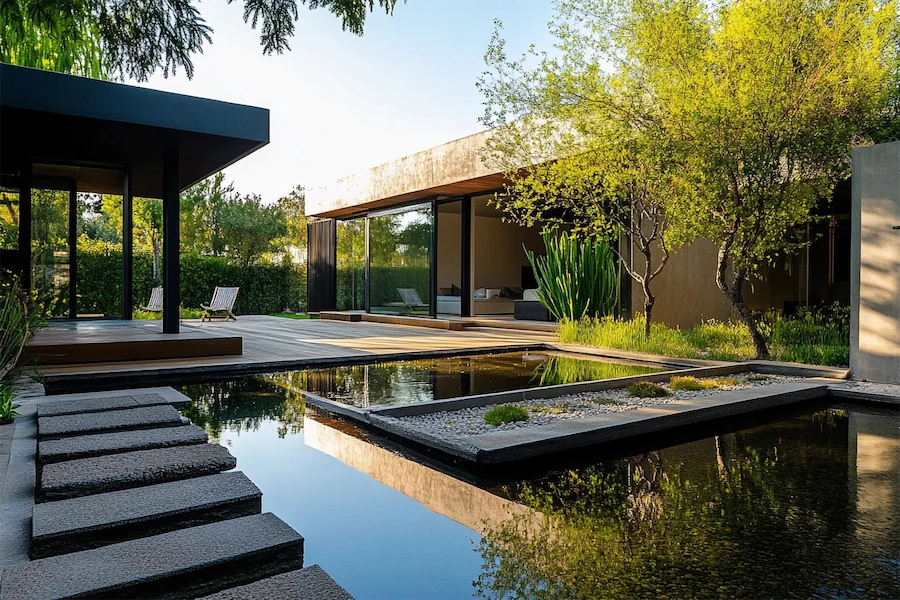Contemporary gardens blend modern aesthetics with natural elements, creating outdoor spaces that are both functional and visually appealing. Characterized by clean lines, minimalist designs, and a harmonious selection of plants and materials, these gardens offer a serene retreat from the hustle and bustle of daily life.
History and Origins of Contemporary Gardens
The evolution of contemporary gardens is closely tied to the modernist movement of the 20th century, which emphasized simplicity, functionality, and a departure from ornate designs. Pioneering landscape architects like Thomas Church introduced modernist principles to garden design, focusing on creating outdoor spaces that complement the architecture of homes and cater to the lifestyle of their inhabitants. This approach marked a significant shift from traditional, formal gardens to more relaxed and usable spaces.
Key Features of Contemporary Gardens
Contemporary gardens are defined by several distinctive features:
- Clean Lines and Geometric Shapes: The use of straight lines and geometric patterns in pathways, plant beds, and structures contributes to a sleek and organized appearance.
- Minimalist Planting: A restrained plant palette, often featuring drifts of one or two species repeated throughout the design, creates a cohesive and uncluttered look.
- Integration of Hard Landscaping: Materials like stone, concrete, and wood are used to construct patios, decks, and walls, adding texture and structure to the garden.
- Emphasis on Texture and Form: The selection of plants with varying textures and forms adds depth and interest, even in the absence of vibrant colors.
- Outdoor Living Spaces: Incorporating areas for relaxation and entertainment, such as seating zones or dining areas, extends the living space of the home into the garden.
Applications of Contemporary Gardens
Contemporary garden designs are versatile and can be adapted to various settings:
- Urban Courtyards: In city environments, contemporary gardens maximize limited space, creating private oases with features like vertical gardens and compact seating areas.
- Suburban Backyards: Larger areas can accommodate expansive lawns, minimalist plantings, and integrated outdoor kitchens or fire pits, enhancing the functionality of the space.
- Public Spaces: Parks and commercial landscapes utilize contemporary designs to offer aesthetically pleasing and low-maintenance environments for public enjoyment.
Considerations When Designing a Contemporary Garden
When planning a contemporary garden, consider the following:
- Climate and Environment: Select plants that are well-suited to the local climate to ensure sustainability and reduce maintenance.
- Maintenance: Opt for materials and plants that require minimal upkeep to maintain the garden’s clean and orderly appearance.
- Cohesion with Architecture: Ensure that the garden design complements the architectural style of the home for a harmonious overall look.
- Lighting: Incorporate subtle lighting to highlight key features and extend the usability of the garden into the evening hours.
Conclusion
Contemporary gardens offer a perfect blend of modern design and natural beauty, providing functional and stylish outdoor spaces. By focusing on simplicity, clean lines, and thoughtful integration of materials and plants, these gardens create serene environments that cater to both aesthetic preferences and practical needs.
